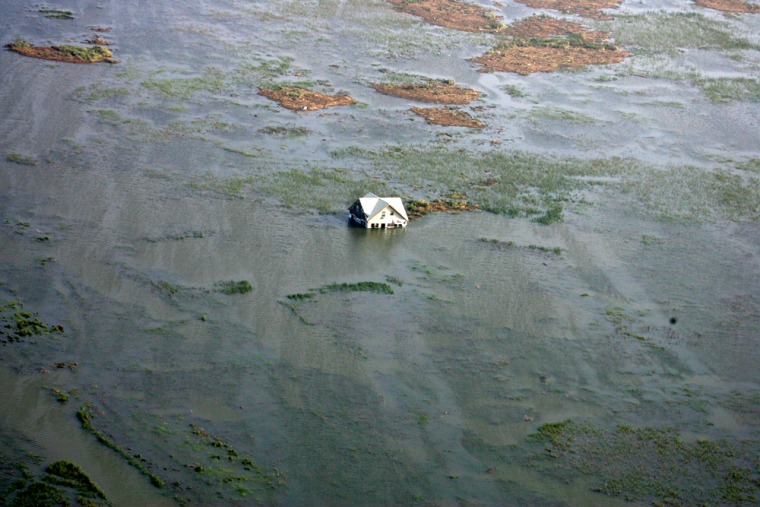Among the lessons to be learned from Hurricane Katrina is that more Americans need to consider buying flood insurance.
The storm, which struck Louisiana, Mississippi and Alabama late last month, caused billions of dollars in damage to houses, not only along the Gulf Coast but also miles inland. Then Hurricane Rita hit Texas and Louisiana last week, causing further destruction.
Many families are learning to their dismay that their homeowners insurance covers damage from hurricane winds and wind-driven rain, but not damage from storm surges and flooding.
And although the federal government has made flood insurance available for more than three decades through the National Flood Insurance Program, many Americans haven’t signed on. In fact, in some hard-hit counties in Mississippi and Alabama, less than 15 percent of families had flood coverage, according to government estimates.
“What Katrina and Rita together are going to reveal is the shocking lack of flood coverage among homeowners, even those very likely to have their homes threatened by flood,” said Robert Hartwig, chief economist for the Insurance Information Institute in New York.
Why don’t people buy it?
“They have a misconception of risk,” Hartwig says. “They don’t remember any previous flooding in their area, or they say they can’t afford it.”
But Hartwig pointed out that the average premium for flood insurance is about $438 a year, and the cost in low-risk areas is $250 to $300 a year.
In some cases, mortgage lenders insist that home buyers purchase flood insurance along with standard homeowners policies. But some people let the flood insurance lapse.
That, said Hartwig, is like concluding that “my house didn’t burn down in the last couple of years, so why should I continue paying for insurance?”
Still, the massive damage from Katrina and Rita along the Gulf Coast has given rise to debate about flood insurance.
The attorney general in Mississippi and a private attorney whose vacation home was destroyed by Katrina are suing to try to invalidate the flood exclusion in homeowners insurance policies. It is unclear how far they will get with their challenges, which will be hard-fought by insurance companies already facing more than $45 billion in claims from this year’s storms.
The storms also have prompted thousands of homeowners outside the Gulf area to check out flood insurance. Even people who don’t live on the coast can suffer damage, when rivers and flood plains overflow from melting snow or heavy rains.
Homeowners can determine how vulnerable their houses are to flooding by plugging their addresses into the Web site run by the National Flood Insurance Program, which is a part of the Federal Emergency Management Agency. The site also lists the cost of coverage, which can be purchased through most agents who sell regular homeowners insurance.
Coverage is available for up to $250,000 on a house and $100,000 on contents. Renters are eligible to buy up to $100,000 coverage on their possessions.
Ed Pasterick, a senior adviser with the NFIP in Washington, D.C., pointed out that the federal insurance program was started after Hurricane Betsy in 1965 caused major damage in the Florida Keys and Louisiana. At the request of Congress, the government launched studies to try to assess flood risks around the country and to encourage communities to limit development in flood-prone areas.
Flood insurance wasn’t widely purchased, however, until the early 1970s, when federally regulated banks were required to make it mandatory for loans on homes in high-risk areas, Pasterick said.
The flood insurance program today has some 4.6 million policies in force. Still, he said, a recent study indicated that just half of people in high-risk areas are covered by flood insurance.
“Outside the high-risk areas, the percentage drops off drastically, often to lower than 5 percent,” Pasterick said.
From 1968 to 2004, the NFIP paid out some $14 billion to flood victims he said, and dealing with the Katrina and Rita fallout will be a challenge.
Hurricane Ivan last year resulted in 24,400 claims and about $1 billion in loss payments, Pasterick said. “By comparison, this year, we have about 275,000 policies in force in Louisiana, Mississippi and Alabama areas affected by Katrina. We’ve already got about 166,000 claims, and they’re still coming in.”
